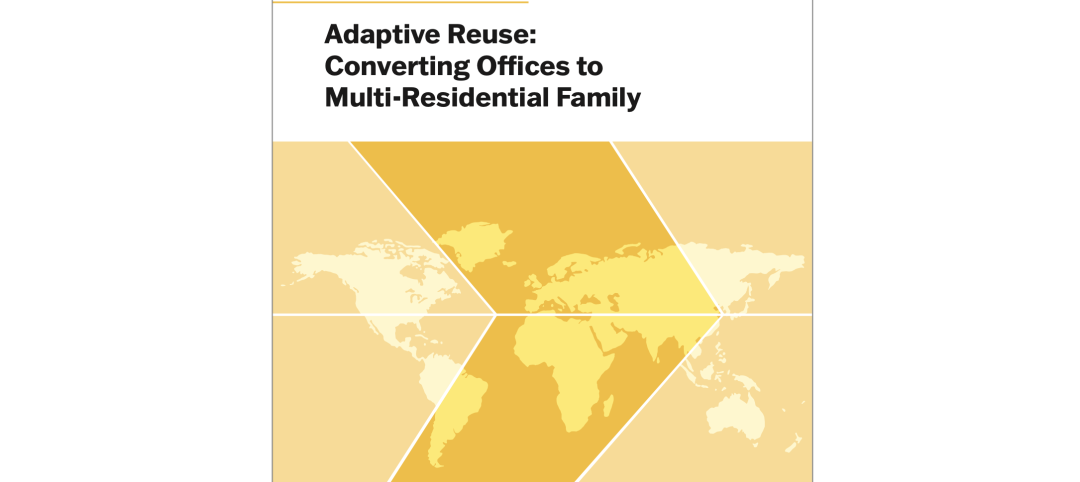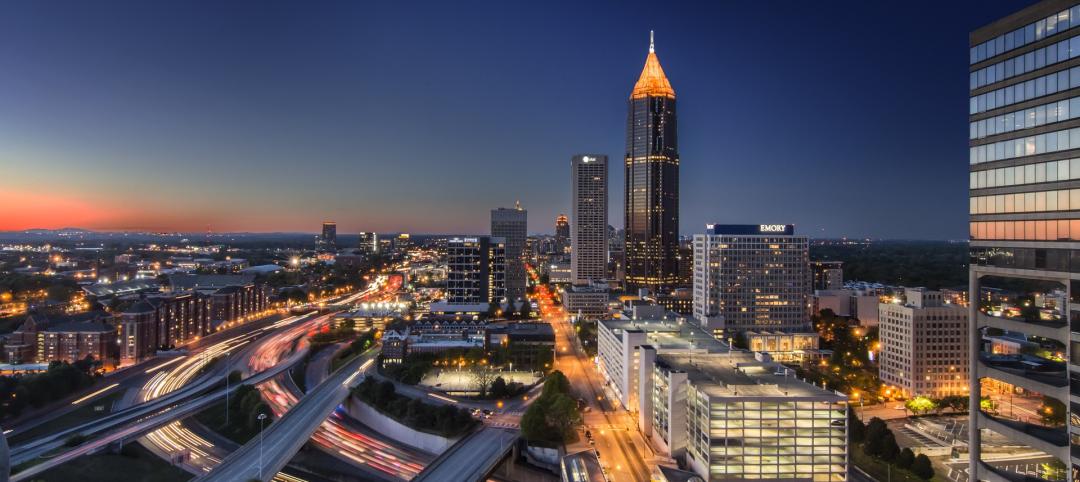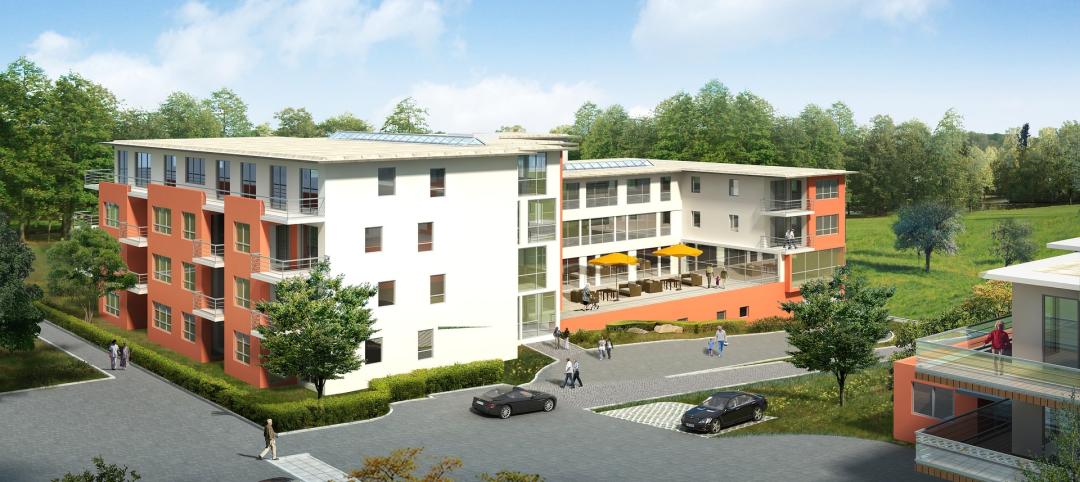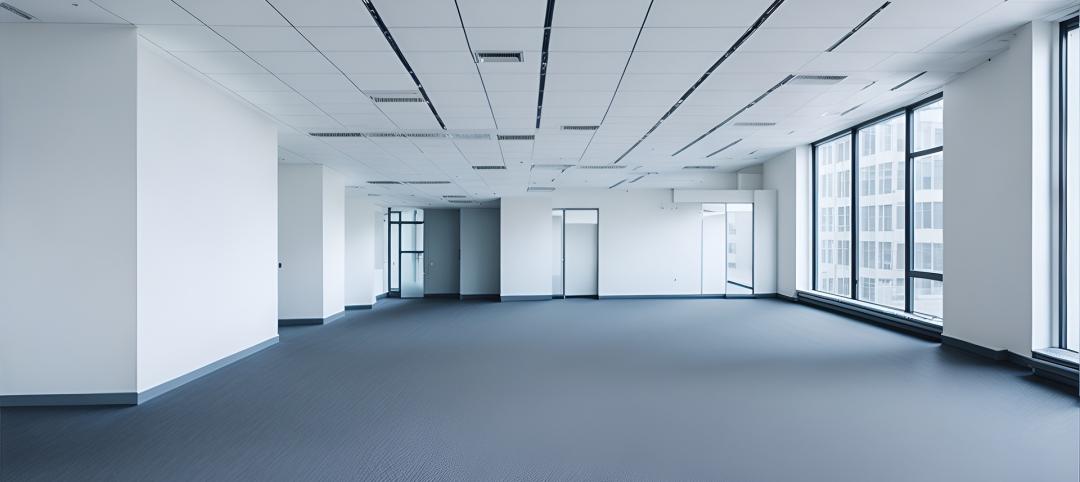Walking the talk. It’s a phrase we’ve all heard and one that gives you a no-bones-about-it proof point. In Knauf Insulation’s case, walking the talk provided the organization with a comprehensive, better-educated green building vantage point – and proof point – when it came time to take a big step in sustainable development.
In 2007 after fire destroyed an office building on the Knauf Insulation corporate campus in Shelbyville, Ind., Knauf targeted, and in 2010, earned U.S. Green Building Council LEED-NC Gold certification for a new 24,860 sq. ft. corporate engineering office building. This provided Knauf with both a challenge and a tremendous opportunity. We became a more active player because of this experience due to the fact that LEED buildings are now pervasive.
Here are two proof points for the growth in green building: more than 40,000 projects are currently participating in the commercial and institutional LEED rating systems, comprising more than 8.3 billion square feet of construction space across the U.S. and in 120 countries; green building is projected to contribute $554 billion to the U.S. gross domestic product for the period 2009 to 2013.
In walking the talk, Knauf experienced the trends and desires that sustainable-minded end-users are after: increased energy cost-savings, enhanced indoor environmental quality and social benefits with responsible resource use and manufacturing. Now, we have a building that is 38 percent more energy efficient than a typical building, which also uses much less water. While we continue to be proud of the ways that the company’s products and processes touch the industrial, commercial and residential markets to create enhanced sustainability, it’s important to note that everything in our sustainable development has been extremely cost-effective. We haven’t had to spend a lot of green to be green.
Sustainability benchmarks like LEED certification are becoming a real target for users of commercial and industrial insulation products - and may even be the right aspiration for your organization.
Working for more insulation credits
There is a point of contention with the USGBC and LEED credits certification - most of the time, all the pipe and duct insulation that goes into a commercial building is part of the mechanical contract. Therefore, it’s not individually considered or singled-out with regard to being available for LEED credit. This is something Knauf Insulation is working on to make commercial builders more aware of the impact of insulation, because if you don’t bid the insulation outside the mechanical contract, you can’t go in and get the recycled content value for the insulation or the renewable resource value that could be in your insulation.
The only way now that the mechanical products can have an impact outside of the building performance, and actually bring in a material and resources credit, is to be considered as a separate contract. We’ve been in communication with the USGBC regarding this particular aspect: getting credit for items like duct and pipe insulation because they have such a huge benefit with their sustainability attributes should be a foregone conclusion.
LEED-ing by example
Our LEED example illustrates that simply the everyday products you use can make a significant green difference to building owners, operators and occupants. We have Knauf Insulation R-40 walls in our building, much more than in a typical building. Using an extraordinary amount of insulation in the walls helped us meet our day-lighting targets.
Today, our insulation also has 55.7% post-consumer recycled content. That in itself is a huge social benefit, but that figure also generates a critical result with manufacturing savings – it allows Knauf to use 15% less energy in manufacturing insulation products. There is perhaps no more noble sustainability story than using post-consumer content to save energy in homes and buildings.
The manufacturing energy example also speaks directly to our pipe insulation regarding embodied energy recovery. When you really examine it, it’s miraculous how much energy you can save per lineal foot of pipe insulation. In about one day, a lineal foot of pipe insulation recovers the energy that it took to manufacture that foot of insulation. And the energy savings are similar with cold pipes; in a day or two, the embodied manufacturing energy is recovered. Insulation is essentially perpetual in what it does. Once the embodied energy is paid back, insulation just keeps saving energy, reducing carbon emission, and saving water via reduced demand on power plants.
Another example from our building is the maximization of daylighting and the minimization of electric lighting. Motion sensors shut off lights when there’s no movement in a room. In the Knauf Auditorium event/training space, heat and ventilation do not turn on unless carbon dioxide sensors recognize the respiration and presence of people using the room. Sustainable features also include water-saving plumbing fixtures and a white membrane roof that minimizes the heat island effect.
Manufacturing trends
The recycled content I mentioned is something that Knauf Insulation is very proud of, but perhaps the most important step in our sustainable development was switching to a bio-based binder (the material that gives our product shape) known as Ecose TechnologyTM, which speaks also to a growing trend with green chemistry, bio-formulations and finding ways to reduce dependency on fossil fuels and fossil-based additives. The 2.5% LEED credit for utilizing rapidly renewable resources is one of the harder LEED credits to get.
For our manufacturing process, we use Knauf family farms that actually grow the same amount of crop that we use for our bio-based binder production. Never in my career did I think I would be interested in sustainable agriculture. It’s important for organizations to actually consider that perspective of looking at alternate ways to source materials. It’s a very positive social aspect of the market transformation toward greener buildings.
Asking the right questions
Sustainable building is the result of the desire and patience to ask the right questions and find the right answers. It makes sense to simulate a building hundreds of times on a computer before you build it to really have a good idea of how it’s going to perform. On the other end of the spectrum, there are still people out there insulating an industrial process to deliver functionality, but not energy efficiency. They’re not designing it to optimum techno-economic performance; there could be a better economic thickness that would use less fuel and deliver fast payback.
More owners and operators of green structures and facilities here and abroad are getting terrific buildings that simply perform better. Realistically, it is also naïve to think that there isn’t skepticism around potentially adding cost to building construction.
For someone constructing a building, if it all comes down to 5 or 10 percent more cost to do a smarter building, and that’s your primary motivator, part of the thought process should be considering the future possibility of not being able to buy fossil fuels any longer – or what if a geopolitical event were to halt the availability of fossil fuel for the U.S. economy? Extending this scenario, if renewable energy is also a future consideration, it may then be too expensive if you haven’t designed your building to perform as well as it possibly can. You would be dealing with the cost of wasted energy.
Energy efficiency is completely critical when you start thinking about renewable energy sources and the probability of success. This is one current difference between the U.S. and Europe, where infrastructure is more rapidly becoming as energy-efficient as possible. In Europe, if you have a building, there’s a built-in incentive to insulate and make a building perform as well as it possibly can. Savings are that much greater and give renewable energy sources a better chance to succeed
Additional advantages
Chief results of sustainable building are resource efficiency and energy efficiency - long-term reducers of cost. There are also additional advantages which may not be so straightforwardly tangible to some, such as comfort. A pleasant work environment is a productive one. In our LEED building, individuals have a three-degree control over their individual office. Compare this to a building that both performs poorly and offers no adjustability for individual spaces; there you might see a haphazard array of space heaters or fans. Space heaters and fans are symptoms of poor-performing buildings.
Like many other LEED-certified buildings, we also have an exercise facility. If you look at healthcare expenses, promoting wellness is both good for employees and employers.
Productivity and comfort may also be enhanced because of acoustics. Since we took our insulation up all the way through the ceiling, you don’t get crosstalk or disruptive noise between offices. Acoustics is one way you can use insulation as an advanced strategy to earn innovation points via LEED certification.
The triple bottom line
When I think about my grandchildren and future generations, I know sustainable choices are the right choices. And they’re often easy choices to make for practical economics, environmental health and for our communities.
Here’s how simple sustainability really is. We take curbside recycling which gets transported by train to our facility, so we can decrease landfilling and the use of virgin resources and also use energy-efficient transportation. We then turn that recycled content into insulation that helps save energy. It’s not any harder than how you’d strategize through a different business operation, but it is the right thing to do and it’s financially viable. +
--
Scott Miller is director of sustainability at Knauf Insulation. With more than 30 years of product assessment and testing experience, Scott is an insulation performance expert with a special focus on sustainability. He holds many insulation product patents and is very active in industry associations such as NAIMA, ASHRAE and ASTM.
Related Stories
Adaptive Reuse | Sep 12, 2024
White paper on office-to-residential conversions released by IAPMO
IAPMO has published a new white paper titled “Adaptive Reuse: Converting Offices to Multi-Residential Family,” a comprehensive analysis of addressing housing shortages through the conversion of office spaces into residential units.
Mixed-Use | Sep 10, 2024
Centennial Yards, a $5 billion mixed-use development in downtown Atlanta, tops out its first residential tower
Centennial Yards Company has topped out The Mitchell, the first residential tower of Centennial Yards, a $5 billion mixed-use development in downtown Atlanta. Construction of the apartment building is expected to be complete by the middle of next year, with first move-ins slated for summer 2025.
Healthcare Facilities | Sep 9, 2024
Exploring the cutting edge of neuroscience facility design
BWBR Communications Specialist Amanda Fisher shares the unique considerations and challenges of designing neuroscience facilities.
Office Buildings | Sep 6, 2024
Fact sheet outlines benefits, challenges of thermal energy storage for commercial buildings
A U.S. Dept. of Energy document discusses the benefits and challenges of thermal energy storage for commercial buildings. The document explains how the various types of thermal energy storage technologies work, where their installation is most beneficial, and some practical considerations around installations.
Office Buildings | Sep 5, 2024
Office space downsizing trend appears to be past peak
The office downsizing trend may be past its peak, according to a CBRE survey of 225 companies with offices in the U.S., Canada, and Latin America. Just 37% of companies plan to shrink their office space this year compared to 57% last year, the survey found.
University Buildings | Sep 4, 2024
UC San Diego’s new Multidisciplinary Life Sciences Building will support research and teaching in both health and biological sciences
The University of California San Diego has approved plans for a new Multidisciplinary Life Sciences Building, with construction starting this fall. The 200,000-sf, six-level facility will be the first building on the UC San Diego campus to bridge health science research with biological science research and teaching.
Codes and Standards | Sep 3, 2024
Atlanta aims to crack down on blighted properties with new tax
A new Atlanta law is intended to crack down on absentee landlords including commercial property owners and clean up neglected properties. The “Blight Tax” allows city officials to put levies on blighted property owners up to 25 times higher than current millage rates.
Resiliency | Sep 3, 2024
Phius introduces retrofit standard for more resilient buildings
Phius recently released, REVIVE 2024, a retrofit standard for more resilient buildings. The standard focuses on resilience against grid outages by ensuring structures remain habitable for at least a week during extreme weather events.
Construction Costs | Sep 2, 2024
Construction material decreases level out, but some increases are expected to continue for the balance Q3 2024
The Q3 2024 Quarterly Construction Insights Report from Gordian examines the numerous variables that influence material pricing, including geography, global events and commodity volatility. Gordian and subject matter experts examine fluctuations in costs, their likely causes, and offer predictions about where pricing is likely to go from here. Here is a sampling of the report’s contents.
Adaptive Reuse | Aug 29, 2024
More than 1.2 billion sf of office space have strong potential for residential conversion
More than 1.2 billion sf of U.S. office space—14.8% of the nation’s total—have strong potential for conversion to residential use, according to real estate software and services firm Yardi. Yardi’s new Conversion Feasibility Index scores office buildings on their suitability for multifamily conversion.

















